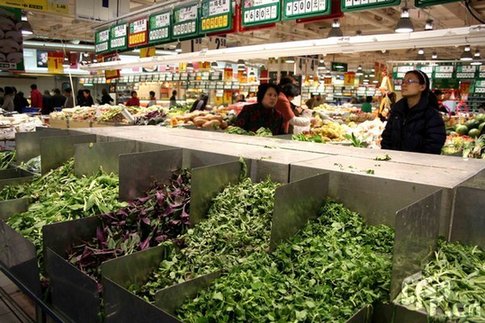Despite the enormous fiscal stimulus and some good signs in the first quarter of this year, deflation is most likely to continue through the year in China, economists and financial analysts warned.
 |
| Specter of deflation looms again [CFP] |
Going by the prices of production materials and food monitored by the Ministry of Commerce in the first two weeks of April, the consumer price index (CPI) and producer price index (PPI) are likely to remain in the negative territory for the month.
CPI, a major gauge of inflation, fell 1.2 percent year on year in March, compared with a decline of 1.6 percent in February, the first monthly fall since December 2002.
In Shanghai, the largest business city in China, CPI declined from minus 0.2 percent in February to minus 0.4 percent in March.
In Shandong province, CPI fell from minus 0.1 percent in February to minus 0.2 percent in March. Most of the other key industrial provinces also showed milder deflationary trends.
In Guangdong province, which makes up more than 10 percent of China's GDP, CPI changed from minus 4.1 percent in February to minus 2.3 percent in March. Though it represented an improvement, it still indicates that the economy is still under severe pressure.
In Jiangsu, another industrial province, CPI edged up from minus 0.5 percent in February to minus 0.4 percent in March.
"The CPI and PPI may start to rebound in the second half, but as a whole, they may remain in negative territory for the whole of this year," said Li Jianfeng, analyst, Shanghai Securities Co Ltd.
Li denied rising concerns that explosive credit growth over the past few months may trigger inflation in the following months. "Since it had dropped in the first two consecutive months, a risk of deflation is still there. And inflation is still far from us, at least it will not appear in 2009," he said.
![Specter of deflation looms again [CFP] Specter of deflation looms again [CFP]](http://images.china.cn/attachement/jpg/site1007/20090424/00016c8b5de90b5b9df235.jpg) |
| Specter of deflation looms again [CFP] |
Wu Tujin, analyst, Great Wall Securities, said that though the strong growth in international commodities prices may lift producer prices in the coming months, consumer prices might not see an immediate rebound. Considering the sluggish labor price, the risk of inflation does not exist this year, he said.
The nation's new yuan loans hit a record high of 1.89 trillion yuan in March, pushing the total new loans for the first quarter to 4.58 trillion yuan, nearly equal to the 4.9 trillion yuan new loans issued in 2008. The strong growth came after the government relaxed its curbs on loan growth last November, and tried to boost the economy with "ample liquidity" and a US$586 billion stimulus package.
"Once the economy starts to recover, the rapid money growth would quickly translate into inflation," Liu Shijin, vice-president of the Development Research Center of the State Council, warned earlier this month, without mentioning when the inflation would start.
Li, however, said that despite the huge money supply, the money flow speed would be slower in the coming months. Hence it may not translate into inflation quickly, he said.
However, analysts also allayed fears of a serious deflation in the near future.
"I don't believe that deflation would be an entrenched problem this time, as the stimulus spending is likely to provide a floor for prices this year," Ken Peng, economist, Citi Group, said.
Analysts point out that the government would continue to maintain a loose momentary policy.
"The central bank may cut the reserve requirement ratio to maintain sufficient money supply in the coming months. Interest rate cuts, however, are unlikely to happen given its inefficiency in increasing money supply in China," Li said.
However, analysts agree that new yuan loan growth may slow down after the first quarter, and maintained at around 7-8 trillion yuan.
(China Daily April 24, 2009)